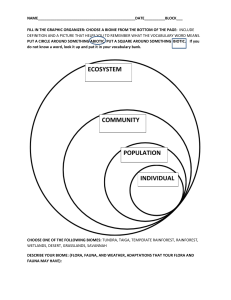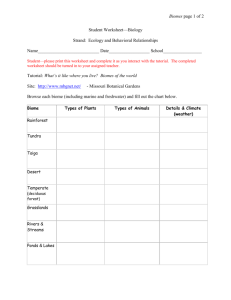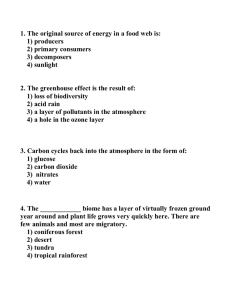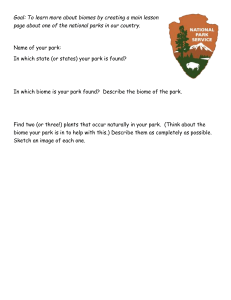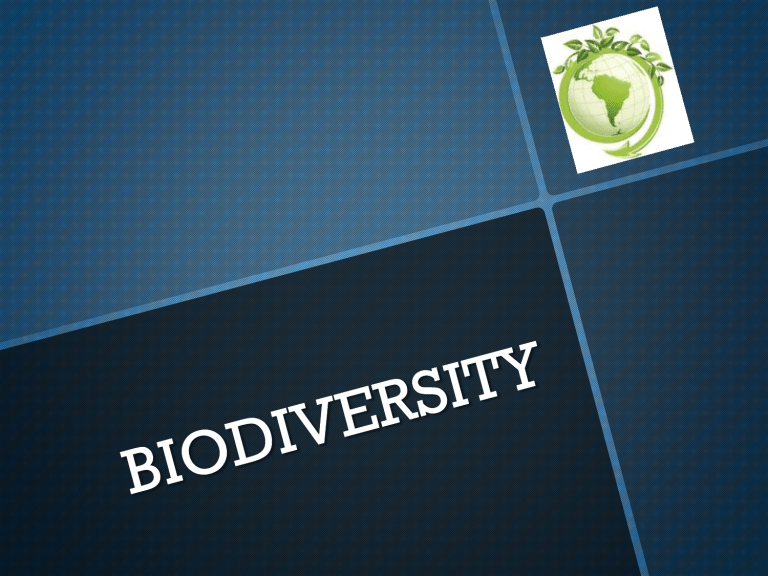
Breaking it down! Different environments allow for Different species of plants and animals (biodiversity) which are ALL needed together to contribute to the Sustainability of the ecosystem (even the ants!!) TERRESTRIAL BIOMES!! (to name a few) Rainforest Temperate Deciduous Forest Taiga Forest Chaparral Grasslands Savanna Desert Tundra Biome Biodiversity click to play! TAIGA DECIDUOUS RAINFOREST Again! An African Savanna is no place for a moose! You won’t find a giraffe in the Taiga! Biodiversity of the Biomes: All the different environments support different varieties of organisms. The climate, location, and soil are examples of biome-specific characteristics that support the unique plants and animals of the area! Check out some FOOD WEBS! food web A shows the succession of organisms in an environment that contributes to the continuation of food energy from one organism to another as each consumes a lower member and in turn is preyed upon by a higher member. A balanced , bio diverse food web assures the sustainability of the environment. See how biodiversity of the animal and plant species is necessary to sustain the very unique environments of each biome!” SO, a BIOME is a large geographical area that has a specific climate and contains some very particular plants and animals. Rainforest Biome Habitat Rainforest Biome Rainforest Biome Microhabitat: moss on a tree Biomes themselves are very large habitats. However, inside of each habitat there are even smaller microhabitats. Definition: microhabitat A is the smallest part of the environment that supports a distinct flora and fauna; the microenvironment in which an organism lives. “A log rotting in the forest creates a microhabitat for insects.”
